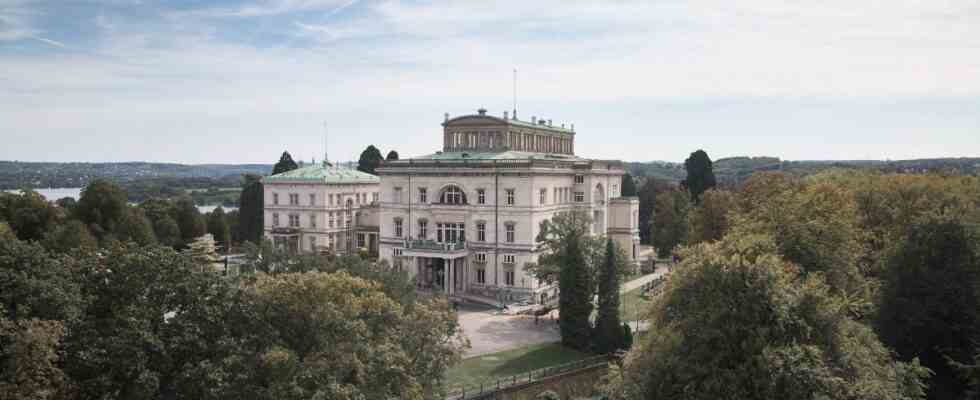As a child, she hated museums. At least that’s how Franziska Kunze’s mother perceived it. So that her daughter didn’t like being dragged by the hand through the musty rooms of the Pergamon Museum. So it was of course a surprise when Franziska Kunze told her mother after graduating from high school that she now wanted to study art history and communication sciences. Did she react with the same surprise that her daughter was now the head of the photography and time-based media collection at the Pinakothek der Moderne is in Munich? One could well imagine. The biographical anecdote with Kunze’s mother was at SZ Kultursalon to find out, which this time did not take place in Munich, but in the Villa Hügel in Essen.
The head of the SZ culture department, Susanne Hermanski, had invited the art historian, who was born in Rostock in 1984, together with guests from Munich and Essen to talk about “curating today – between the museum and Instagram”. The glamorous event room, the former living room of the industrialist family Krupp with its unbelievable 440 square meters, seemed at first to point straight into history. But the villa is not just a former residential and representative building. It also houses a huge photo archive. In addition, the Krupp von Bohlen und Halbach Foundation, which owns the building, offers an extensive scholarship and support program.
Franziska Kunze received a scholarship from the Krupp von Bohlen und Halbach Foundation. Now she was a guest at the SZ Kultursalon in Essen.
(Photo: Alex Muchnik/Krupp Foundation)
This also includes the “Museum Curators for Photography” scholarship program. Franziska Kunze completed this from 2017 to 2019, with stations at the Munich City Museum, Museum Folkwang Essen, Fotomuseum Winterthur and Victoria & Albert Museum London. What has she learned in the two years? The “whole program”, i.e. how to make exhibitions from “the roots”. And that should be very useful now that she has been responsible for an important photographic collection with works by Karl Blossfeldt, August Sander, Germaine Krull, Man Ray and David Hockney at the Pinakothek since 2020. Or for video works by Bruce Nauman, Bill Viola or Pipilotti Rist.
The topic of your doctoral thesis? “Opaque photographs”, which Kunze deliberately described in a simplified way as the “downside of documentary photography”. A central research result was that “photography is always shaped and formed” by “different locations and styles”. It is therefore always “subjective”. Photographed yourself? She never did, at least not in the artistic sense. But she “did a course on analogue processes in the 19th century” to better understand the technology. And in art class in Greifswald they would have photographed objects. But show her photographs to someone? She doesn’t want to put that on anyone.
Too much modesty? Perhaps. You could also call it unpretentious, matching the black shirt and white sneakers she was wearing that evening. And in general about her way of not playing too much in the foreground. You can believe that she does not see herself as the “great” curator à la Harald Szeemann at a time when even arranging peas is considered curating, as Susanne Hermanski put it. In “a place with a permanent collection” it’s different anyway. There is “everything that leads to an exhibition, yes, what makes this job”. And a format like “Collection+” in the Pinakothek can sometimes come about by spending a lot of time in the collection and doing “small deep holes” there.
Instagram is one of the new channels through which you can reach younger people in particular
And Instagram? This is one of the “new channels” with which you can reach “completely different” and above all younger people, but where new art can also be created. The danger of sensory overload from social media? She doesn’t actually see it, because “our capacity to absorb” is also changing with technology. And she finds it extremely exciting “how many photographic artists no longer take photographs” and instead work with the existing pool of images.
This also includes Astrid Jahnsen from Lima, from whom she is showing an exhibition from May 19th. The Peruvian discovered hand-made erotic magazines from the 1950s to 1990s and reproduced details of them. And it is impressive how she “turned the context”. New contexts are also emerging in the presentation of the collection, which, according to Kunze, is currently being remodeled. They want to “break the chronology” and look: “What can we tell with the works?” So that it fits into today’s time, i.e. that of Instagram & Co.

